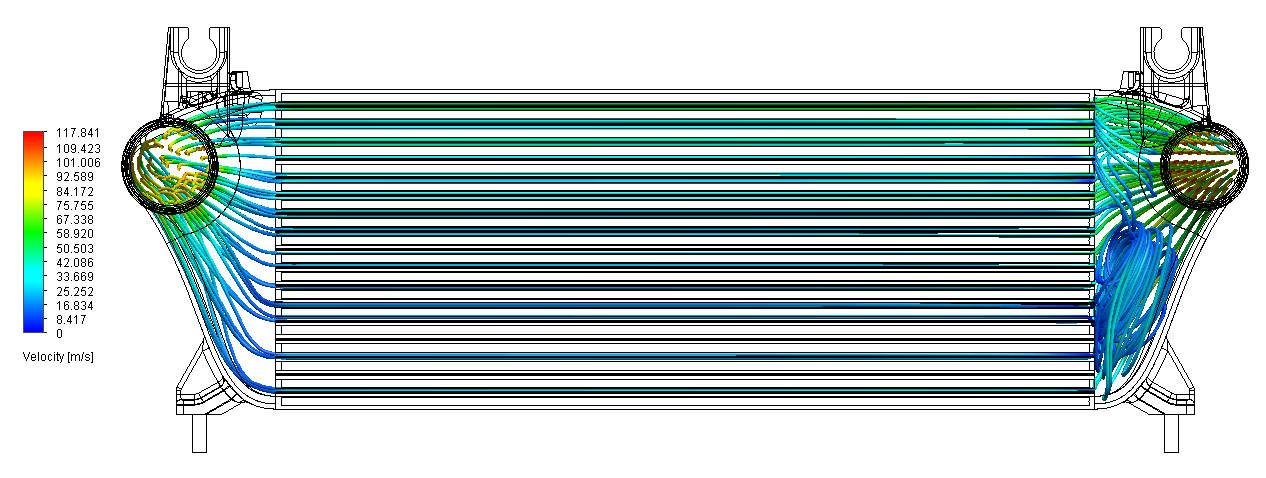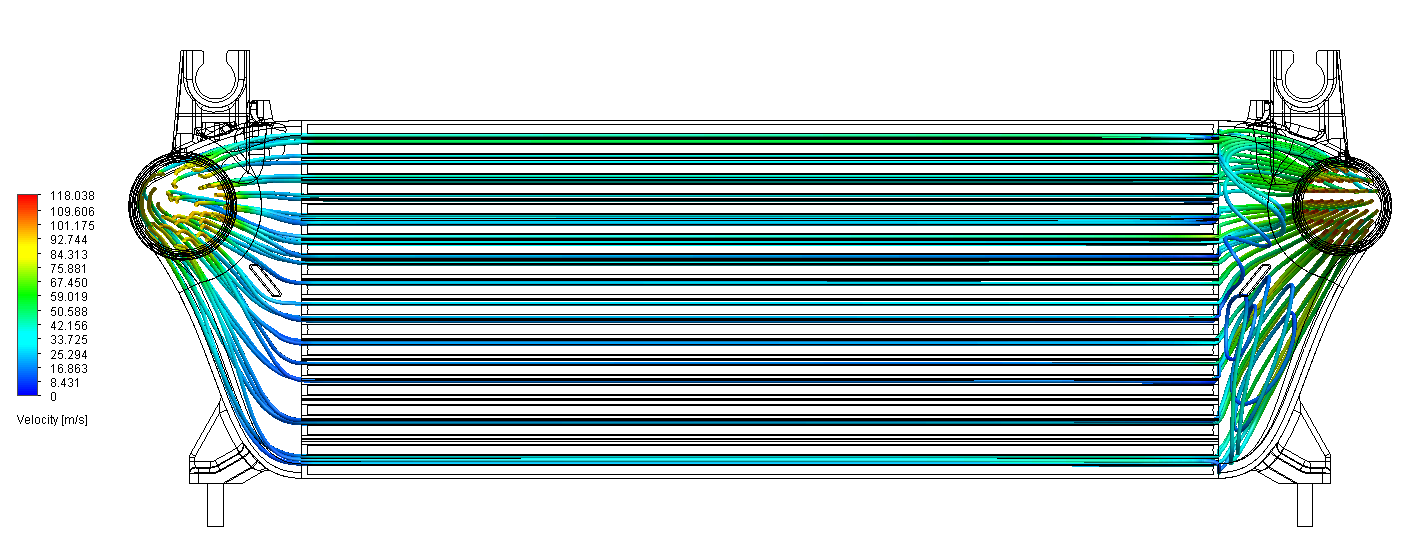
Go Your Own Way - Performance Intercooler R&D, Part 2: Design
When we last talked about the 2019+ Ford Ranger 2.3L EcoBoost, we looked at the stock intercooler. To recap, the stock Ranger intercooler is similar to almost every other stock intercooler we've seen. It utilizes a tube-and-fin core with plastic crimped on end tanks, nothing too out of the ordinary. The only unique feature of the stock Ranger intercooler is the turbocharger boost pressure sensor that lives on the driver's side end tank. This sensor seals in the intercooler by way of an o-ring, so the bore in our end tank will need to be precise to prevent leaks. So, with the stock intercooler examined, we began designing our performance replacement.
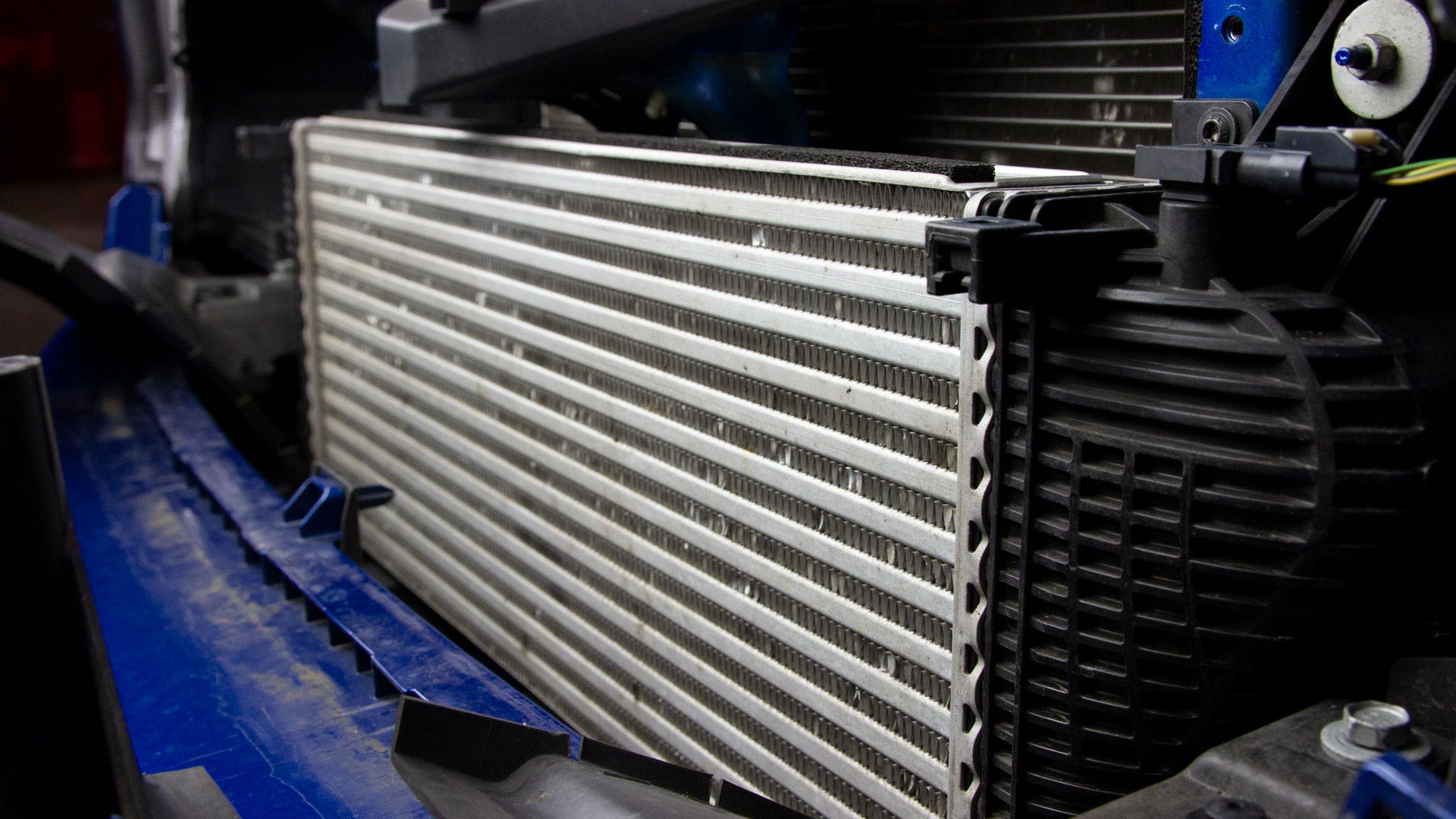
We began our design with the core of the intercooler. The stock Ranger intercooler uses a tube-and-fin core that isn't very durable and leaves a lot of cooling potential on the table. To make our intercooler more efficient and more durable, we'll use a bar-and-plate core that is significantly larger than the stock unit. Our core will be 45% thicker than stock, which will not only add to the cooling surface area and core volume but also add a significant amount of mass to the intercooler. If we were designing an intercooler for a small car that might see a lot of track time, we'd be trying to reduce weight. But for the Ranger that will likely see more low-speed off-road driving, that extra weight is an advantage. More mass in an intercooler means it can absorb more heat from the air before it becomes heat soaked.
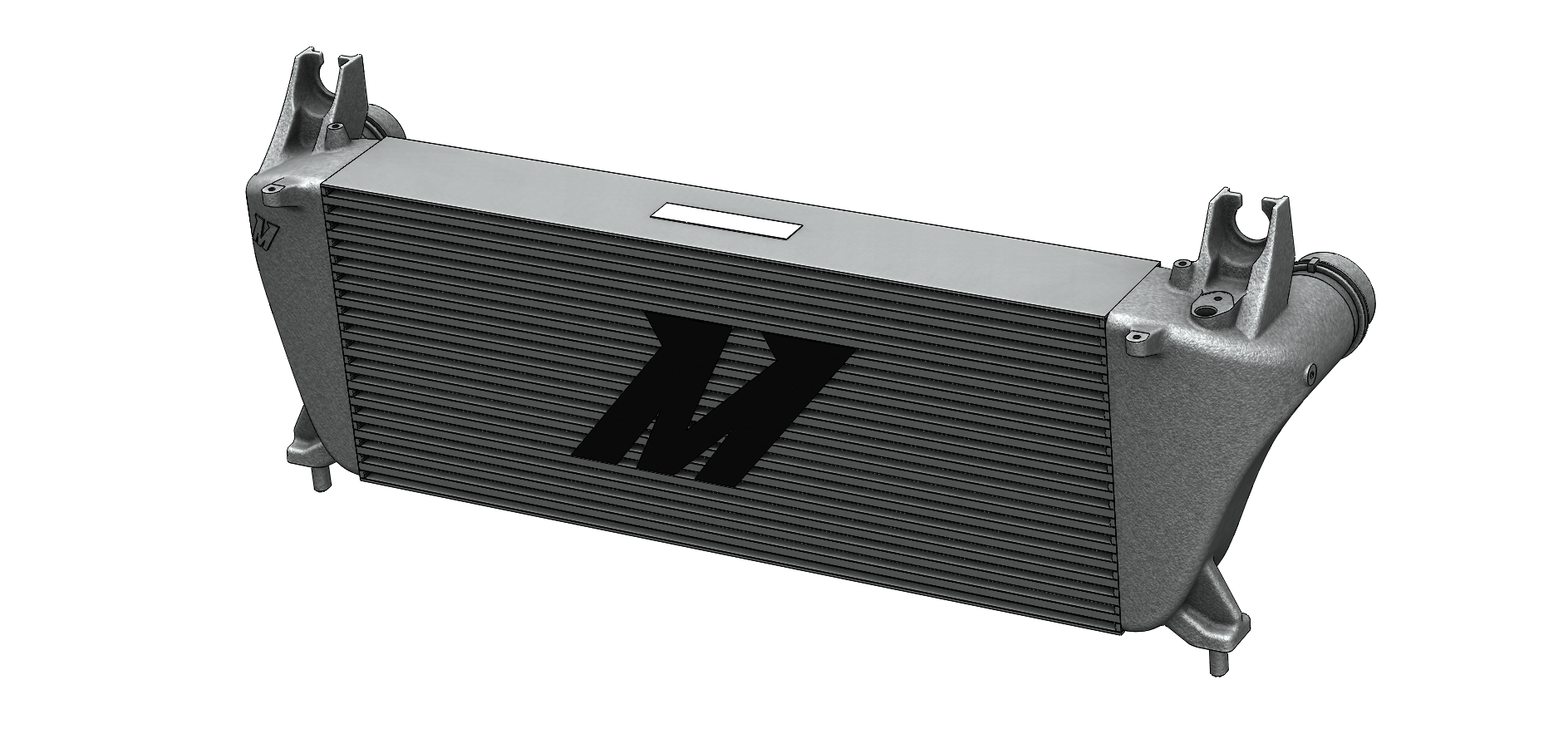
To make the end tanks just as durable as the core, we'll be ditching the plastic in favor of cast aluminum. These cast-aluminum end tanks will be TIG welded to the core for a bulletproof intercooler that can handle anything the road or trail can throw at it. Casting the end tanks also allows us to ensure critical features, like the mounts and bore for the pressure sensor, are located precisely where they need to be.
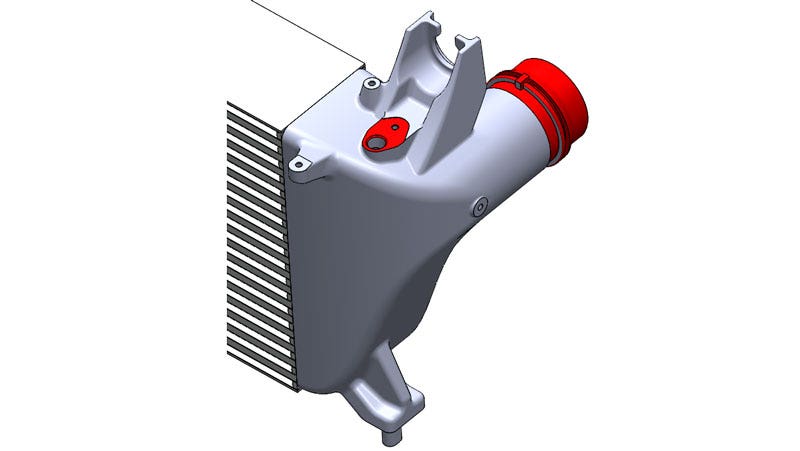
Casting the end tanks also allows us to optimize the performance of the intercooler. As air flows into and out of the core from the end tanks, it follows the path of least resistance. That often means the air will flow through some tubes more than others. To help combat this and ensure that the entire core is used as efficiently as possible, our engineers run computational fluid dynamics (CFD) simulations to analyze the flow of air through the core. Based on how the air flows through the core, we can then design diverter plates in the end tanks to direct flow through the entire core. The diagrams below show air velocity through the end tanks and core. Without diverter plates (first image), the air enters the end tank, fills the top tubes, then remains stagnant at the bottom of the end tank. With the diverters in place (second image), the air is evenly distributed through the core and end tanks, making the intercooler significantly more efficient.
With our design complete, we can move on to the prototype phase and make sure it fits the Ranger. In the next post, we'll build that prototype, test fit it on the Ranger, and, if all goes to plan, kick-off production. So, keep an eye out for the next update and let us know what you think!
Thanks for reading,
-Steve




